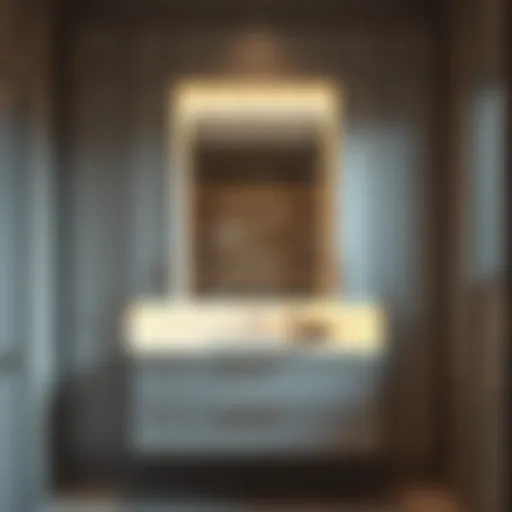Exploring the Benefits and Design of Walk-In Bathrooms
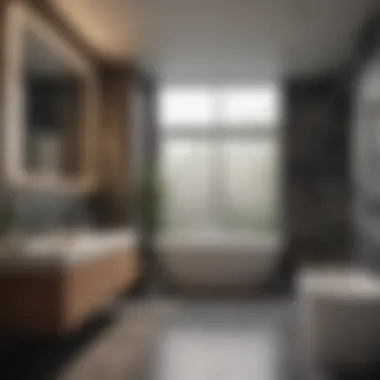
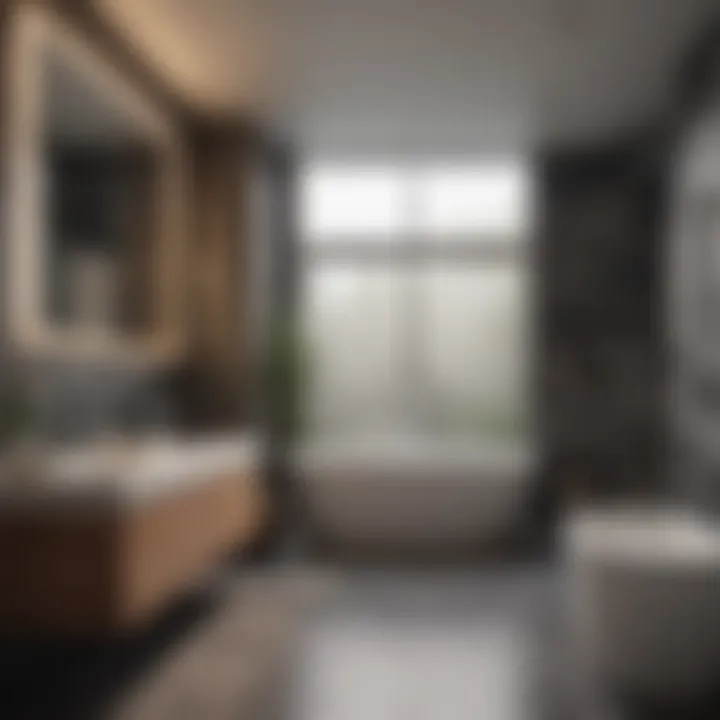
Intro
Walk-in bathrooms are quickly gaining traction among homeowners who seek not just functionality but also an element of design and relaxation. Gone are the days when bathrooms were merely utilitarian spaces. Today, they can be transformed into personal sanctuaries. This section introduces the aspects that make walk-in bathrooms so appealing and versatile.
The trend toward walk-in bathrooms serves various needs. They cater to those seeking a more accessible space, as well as the design-savvy homeowners who wish to incorporate modern aesthetics into their daily routines. Incorporating technology and thoughtful design can elevate a basic washroom to an oasis of calm.
A well-designed walk-in bathroom marries style and serenity, transforming an everyday chore into a luxurious experience.
Trending Styles
Modern Minimalism
Modern minimalism has taken the design world by storm, and walk-in bathrooms are no exception. This style emphasizes clean lines, functional design, and an uncluttered aesthetic. Walls painted in soft whites or muted shades enhance the sense of space, while hidden storage solutions keep items out of sight.
Key characteristics of modern minimalism in walk-in bathrooms include:
- Simple fixtures: Opt for sleek, chrome faucets and handle-less cabinetry.
- Open layouts: Create a feeling of spaciousness by using large tiles on floors and walls.
- Natural light: Strategically placed windows or glass walls can invite natural light, promoting a tranquil environment.
Cozy Rustic
Cozy rustic styles are another popular choice that brings warmth and charm to a walk-in bathroom. Natural materials, like wood and stone, play pivotal roles in this design. The aim is to create an inviting space that feels comfortable and homely.
Elements that define a cozy rustic walk-in bathroom:
- Wooden accents: Exposed beams or reclaimed wood vanities add character.
- Earthy color schemes: Shades like deep browns, slate greys, or greens create a grounding atmosphere.
- Textiles and accessories: Soft towels, woven baskets, and even natural elements like potted plants can enhance the rustic feel.
Color Palettes
Calming Neutrals
When it comes to color palettes, calming neutrals reign supreme. Colors like soft beige, muted greys, and gentle whites can help foster a meditative environment, making them ideal for bathrooms. These shades also work well with various styles, whether minimalistic or rustic.
Choosing a neutral palette promotes:
- Serenity: Achieving a calm atmosphere helps relieve the stress of daily life.
- Light reflection: Neutrals reflect light effectively, making spaces feel larger and more open.
- Versatility: Such colors pair well with a range of accessories, from colorful towels to intricate tiles.
Bold Accents
In stark contrast to neutrals, bold accent colors are favored by those who want their walk-in bathroom to stand out. Whether it’s a vibrant teal or a rich burgundy, bold colors make a statement. Incorporating these can inject personality into a space that may otherwise feel bland.
Ideas for bold accents in a walk-in bathroom:
- Feature walls: A striking mosaic or patterned wall can serve as a focal point.
- Graphic tiles: Unique tile designs can bring life to floors or backsplashes.
- Bright accessories: Choose pop-colored shower curtains, towels, or decorative items to create visual interest.
Prelims to Walk-In Bathrooms
Walk-in bathrooms have emerged as a significant trend in home design, marrying practicality with style. In today’s fast-paced world, the spaces we inhabit should serve both utility and personal relaxation. This article delves into the concept of walk-in bathrooms, highlighting key elements that enhance their allure, from innovative design features to their wide-ranging benefits.
A walk-in bathroom transcends the traditional notion of a bathroom by providing an open layout and accessibility. The versatility of these spaces allows for a tailored experience, accommodating personal preferences across different demographics, whether you’re a tech-savvy millennial or a senior seeking convenience.
Moreover, these bathrooms represent a shift in how we view domestic spaces. No longer are bathrooms just functional rooms; they are becoming sanctuaries for self-care and rejuvenation. This evolution in purpose is pivotal as it reflects changing lifestyles that prioritize wellness and ease of use.
Significance of Walk-In Bathrooms
- Maximized Space: Walk-in bathrooms often utilize space more efficiently, which can be a game-changer for smaller homes.
- Accessibility: They cater to individuals of all ages and capabilities, providing ease of movement and safety features.
- Aesthetic Opportunities: The potential for custom design and unique fixtures can transform an ordinary bathroom into a visually appealing retreat.
The following sections will explore these bathrooms in greater detail, defining what a walk-in bathroom entails, discussing its historical context, and underlining the practical benefits homeowners can reap from them.
Design Elements of Walk-In Bathrooms
Designing a walk-in bathroom involves more than just selecting a few nice tiles and tossing in some fixtures. It's about creating a functional space that caters to individual needs while also reflecting a personal aesthetic. A well-thought-out design can transform a mundane bathroom into a luxurious retreat or a practical haven, depending on what homeowners want. Each element plays a crucial role, from spatial arrangements to material choices, ultimately enhancing the user experience.
Spatial Considerations
Assessing Available Space
When it comes to assessing available space, it's like trying to fit a round peg in a square hole. Every inch counts, and the layout must maximize efficiency without overcrowding the space. For instance, in smaller homes or apartments, clever assessments often reveal unused corners or niches that can hold storage or features like a shower nook.
One key characteristic of assessing space is understanding flow. This is the way users move through the area when using the bathroom, whether it's rushing in during a morning routine or lounging in a post-bath haze. A beneficial aspect of this assessment is it fosters creativity; for example, incorporating wall-mounted fixtures can save floor space.
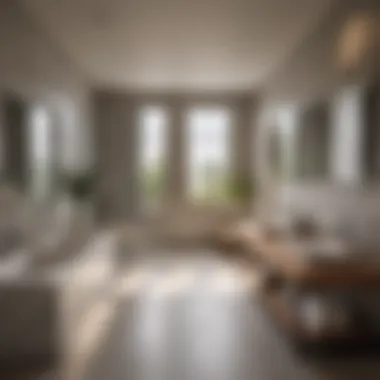
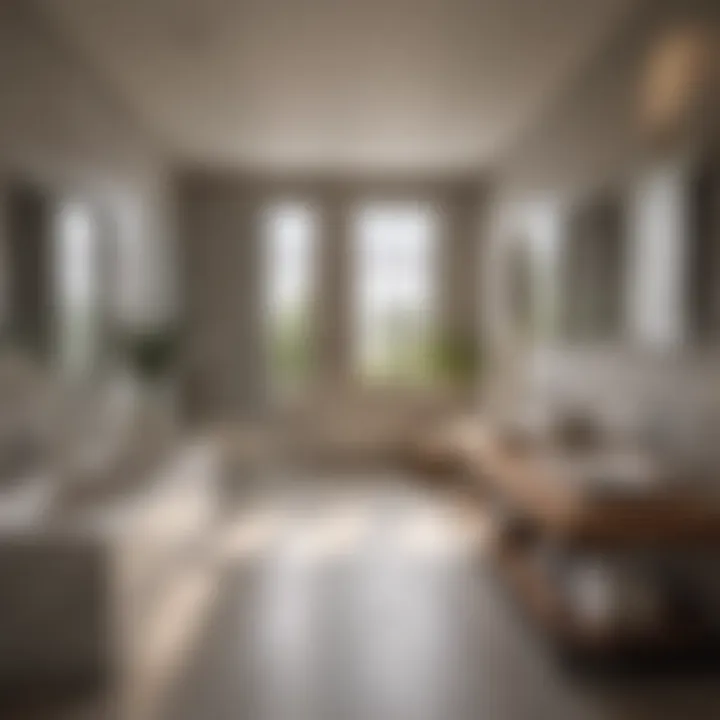
However, it does come with unique disadvantages. Not all spaces are amenable to an open layout. Sometimes, walls that can't be moved or awkward plumbing can limit design options.
Optimal Layouts for Functionality
An optimal functional layout is the backbone of any successful walk-in bathroom. This involves placing elements such as sinks, showers, and toilets in a manner that promotes ease of access and minimizes chaos. Imagine trying to brush your teeth while someone is taking a shower. Not exactly a Zen moment.
A key characteristic of efficient layouts is zoning. This divides the bathroom into distinct areas for various tasks—like getting ready vs. relaxation—which can dramatically improve daily routines. A beneficial choice in this regard is ensuring ample space between fixtures, encouraging a more pleasant experience.
On a more practical note, however, creating these zones can be tricky in smaller bathrooms. Too much division of space can lead to a crammed feeling, possibly making the room less enjoyable.
Materials and Finishings
Choosing Durable Surfaces
Choosing durable surfaces is a fundamental aspect of any bathroom design. Given the constant exposure to moisture, utilizes materials that withstand wear and tear, like ceramic tiles or stone countertops, is vital. The process of selecting materials often feels like a balancing act between durability and style.
A key characteristic of durable surfaces is their longevity. Homeowners want to invest in materials that won’t crack or stain easily. This is a beneficial move since frequent repairs can lead to unnecessary costs down the line. Moreover, modern products come in an array of styles, allowing for both beauty and function.
However, there's a trade-off. While durable materials offer longevity, they can often come with a higher upfront cost, which might strain a tight budget.
Balancing Aesthetics and Practicality
Balancing aesthetics and practicality can feel like walking a tightrope. On one hand, everyone wants a bathroom that looks stunning, but on the other, it’s also about functionality. Using elegant materials like marble can elevate the space, but if they’re impractical for daily cleaning, that beauty can become a hassle.
A key characteristic here is adaptability. Selecting color schemes and materials that align with both personal style and maintenance needs is crucial. For instance, darker colors can hide stains but may not be everyone’s cup of tea. This balance is a beneficial approach for homeowners looking to create a striking visual while retaining functionality.
However, an overly aesthetic focus can lead to neglecting practicalities, leaving potential pitfalls in maintenance that can affect long-term enjoyment.
Fixtures and Features
Shower Options
The choice of shower options in a walk-in bathroom is paramount. Homeowners can opt for everything from rain showers to detachable handheld units, shaping the experience significantly. This choice dictates not just functionality but also enhances the perceived luxury of the space.
One key characteristic is customization. Custom-built showers can cater to personal preferences and enhance the user experience. For many, it's not just about cleanliness; it’s about enjoying the experience.
Yet, this flexibility can come at a cost. High-end designs require more planning and investment, treading into budget territory that might make some homeowners hesitate.
Vanity and Storage Solutions
When it comes to vanity and storage solutions, the focus should be on versatility and practicality. A well-thought-out vanity area provides not only a space for grooming but should ideally have storage for toiletries, linens, and other essentials.
A key characteristic of this aspect is multifunctionality. Dual sink vanities, for instance, serve both style and necessity, especially in family homes. This makes them a beneficial choice because they maximize storage and serve multiple users.
However, creating a compact yet functional vanity can be challenging in smaller spaces, leading to potential frustrations.
Lighting Considerations
Lighting considerations can dramatically influence the ambiance of a walk-in bathroom. Proper lighting changes a space, making it feel larger or cozier, depending on how it's set up.
A key characteristic here is flexibility. From bright work lights to soothing low-lights, homeowners can tailor the lighting to fit various needs, be it for grooming or relaxation. This versatility makes lighting a beneficial design element.
On the flip side, getting the lighting just right can be tricky. An overcrowded setup can lead to harsh glare or unwanted shadows, undermining the calming atmosphere many homeowners seek.
"Design is not just what it looks like and feels like. Design is how it works." – Steve Jobs
Functional Advantages of Walk-In Bathrooms
Walk-in bathrooms stand out not only for their design but also for numerous practical benefits they bring to homeowners. With these spaces becoming increasingly popular, understanding their functional advantages can help potential users appreciate how effectively they meet both aesthetic and practical needs. Accessibility, enhanced hygiene, and user ease are just the tip of the iceberg when it comes to what walk-in bathrooms offer.
Accessibility and Ease of Use
Aiding Seniors and Mobility-Impaired Individuals
One key element of walk-in bathrooms is their emphasis on accessibility. Many features tailored for seniors and those with mobility challenges make these bathrooms more than just convenient; they enhance the quality of life.
Key Characteristics: These bathrooms often incorporate low-threshold shower entries and grab bars strategically placed to prevent slips. Such adaptations are often loved for giving independence back to individuals who may have relied on assistance for daily tasks.
Benefits: With these accessible features, users can enjoy a sense of autonomy without worrying about accidents. For instance, the gradual decline from the bathroom floor to the shower eliminates the need for high steps, making it a safer choice overall.
"A bathroom designed with accessibility in mind transforms how seniors experience day-to-day routines, fostering not just functionality but dignity."
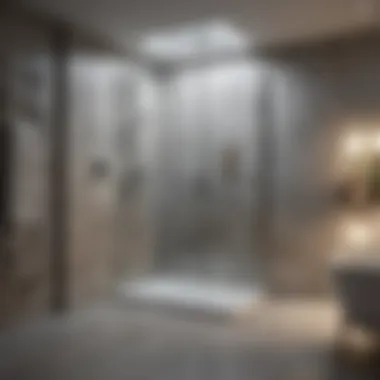
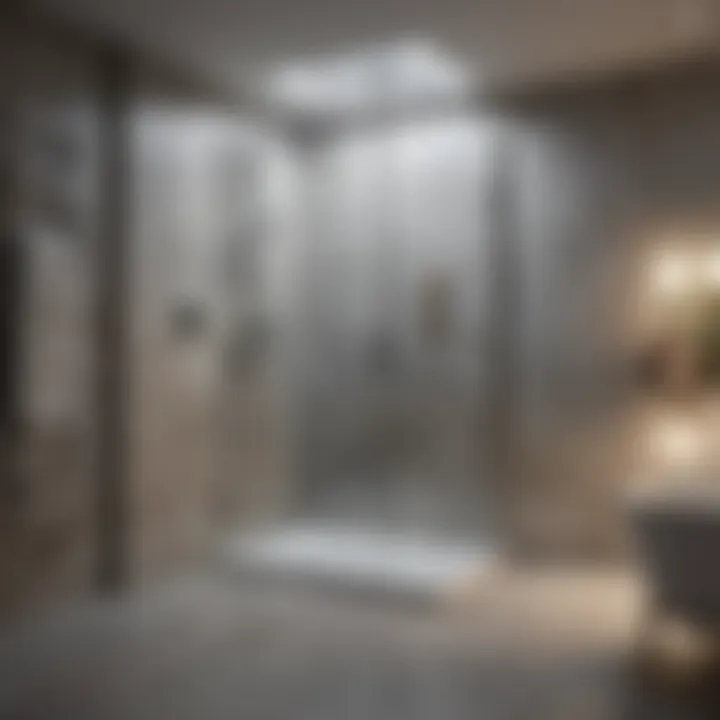
Universal Design Principles
Universal design principles in walk-in bathrooms extend beyond basic accessibility. They focus on creating spaces that are usable for everyone, regardless of age or ability.
Key Characteristics: This approach incorporates features such as adjustable shower heads, wide door frames, and ample maneuvering space, ensuring nobody feels cramped or hindered when using the facilities.
Benefits: By facilitating simple access for all, these designs prevent the feeling of being limited by age or mobility concerns. One unique aspect is designing versatile spaces that can evolve with users, adjusting to their growing needs over time.
Enhanced Personal Hygiene
The walk-in bathroom is introduced as a haven for personal hygiene. With the increased emphasis on cleanliness in recent years, having a space designed with hygiene in mind has become crucial.
Convenience of Cleaning: With fewer corners and crevices compared to traditional setups, walk-in bathrooms can be a breeze to clean. This straightforward maintenance not only saves time but also reduces the growth of bacteria and mildew.
Features for Hygiene: Features like touchless faucets, anti-slip flooring, and proper ventilation systems amplify the hygiene benefits. Utilizing water-resistant materials further ensures that there’s little risk for mold or water damage, keeping the space fresh and inviting.
In summary, the functional advantages of walk-in bathrooms extend beyond mere convenience. They are a harmonious blend of design that prioritizes both accessibility and cleanliness, making them a wise investment for any home. Whether it’s for providing independence to seniors or enhancing hygiene standards, the practicality is evident in every corner.
Aesthetic Appeal of Walk-In Bathrooms
The aesthetic appeal of walk-in bathrooms is a key aspect that elevates these spaces from mere functional areas to personal sanctuaries. Choosing a walk-in bathroom provides an opportunity to create an environment that embodies style and comfort, something many modern homeowners seek. It’s not just about fitting in a bathtub or shower; it’s about designing a space that reflects personal taste while also considering elements that contribute to relaxation and rejuvenation.
A well-designed walk-in bathroom can serve as a daily retreat from the hustle and bustle of life. The soothing ambiance, created through deliberate choices in design and decor, enables individuals to unwind and indulge in self-care routines. To achieve this aesthetic, several factors should be taken into account, including lighting, fixtures, and materials. Customizing these elements ensures that each walk-in bathroom can resonate with the user’s unique style.
Creating a Spa-Like Environment
Transforming a walk-in bathroom into a spa-like environment is about harnessing tranquility through thoughtful design choices. One effective method is to incorporate natural elements and neutral color palettes that evoke feelings of serenity.
Adding a rain showerhead, for instance, can mimic the sensation of being outdoors, enhancing that calming experience. The integration of features like a soaking tub or heated flooring promotes comfort and luxury.
Furthermore, incorporating soft lighting fixtures can help set the mood. Consider dimmable lights or strategically placed sconces that create a gentle glow, making the space feel warm and inviting.
Incorporating lush plants can also enhance the air quality and ambiance, bringing a touch of nature indoors. It’s these details that can elevate a standard bathroom into a peaceful getaway.
"Creating a space that feels like a retreat starts with small choices- every detail matters."
Color Schemes and Themes
Color palettes are crucial when designing an aesthetically pleasing walk-in bathroom. Neutral tones like whites, beiges, and soft greys often work marvelously, providing a blank canvas that allows for personal touches. These hues can make the space feel larger and more open, while also promoting a sense of calmness.
Adding splashes of color through accessories, such as towels and bath mats, introduces personality without overwhelming the senses. The theme can also be reflected in the choice of materials—think natural stones, bamboo accents, or even subtle metallic finishes for a touch of elegance.
When considering themes, homeowners might choose something like a coastal look with soft blue and sandy beige to evoke the beach, or a more grounded earth-tone theme that connects the space to nature. Themes not only influence aesthetics but can also tie the bathroom's design to its overall context within the rest of the home. By harmonizing colors and styles, the walk-in bathroom can seamlessly blend with adjacent areas, creating a cohesive flow in the home.
Technology in Walk-In Bathrooms
In today's fast-paced world, technology has woven itself into the very fabric of our daily lives, and the walk-in bathroom is no exception. The infusion of advanced gadgets and systems into these spaces not only enhances convenience but also elevates the entire bathing experience. Picture stepping into a relaxing oasis equipped with features that adjust temperature, control lighting, and even play your favorite tunes—all at the touch of a button. Each technological element contributes to making the walk-in bathroom not merely a functional area, but a sanctuary where peace and efficiency coexist.
Smart Showers and Fixtures
The modern smart shower is quite a game changer when it comes to walk-in bathrooms. With features such as water-saving modes and customizable settings, these showers ensure not only a personalized experience but also help conserve water. Imagine a morning routine enhanced by a shower that knows your preferred temperature and even maintains it throughout your time in there. Adding to this, many of these fixtures come with app integration. You get to check the water temperature before stepping in, or even start the shower remotely from your bedroom—now that's what I call a morning upgrade!
- Temperature Control: Maintains a consistent feel while also adjusting to user preferences.
- App Integration: Allows fine-tuning through mobile devices.
- Water Efficiency: Promotes sustainable consumption by using less water without sacrificing performance.
More than just a stream of water coming from above, smart showers offer ways to enhance relaxation times. Consider options like built-in Bluetooth speakers, which turn your shower into a mini-concert hall. You might find yourself looking forward to your shower like it's a live concert rather than just a chore!
Energy-Efficient Options
Energy efficiency doesn't just mean saving on utility bills; it is about conscious living where each choice reduces your carbon footprint. Walk-in bathrooms are no longer just disconnected utility spaces; you can now integrate energy-efficient solutions to support sustainable living.
- LED Lighting: Instead of traditional bulbs, installing LED lights can cut down on energy consumption significantly while providing soft and soothing illumination.
- Low-Flow Fixtures: These are a smart choice for both showers and toilets, reducing water use significantly without sacrificing pressure or comfort.
According to Environmental Protection Agency, upgrading to low-flow fixtures can reduce water use by an impressive 20% per year.
- Solar Water Heaters: If you're feeling adventurous, consider investing in solar water heating. This technology harnesses sunlight to keep your water warm, which can ultimately save on electric bills.
"Think of your walk-in bathroom as a canvas. Every technological choice can paint a picture of luxury and sustainability."
By implementing these technologies, your walk-in bathroom emerges as a leader in eco-friendly practices while being a cutting-edge space for enjoyment. It's about making small yet impactful choices that align with a more mindful living.
In summary, incorporating smart systems and energy-efficient options into walk-in bathrooms presents multiple advantages that align with both modern lifestyles and sustainable practices. Whether easing your daily routine or promoting environmental responsibility, technology plays a vital role in enhancing the versatility of these increasingly popular spaces.
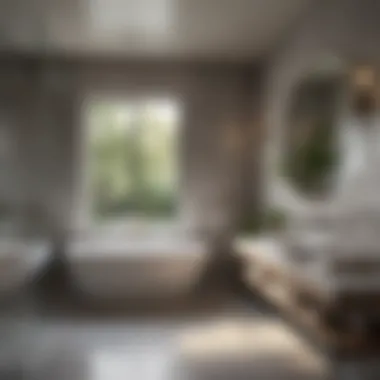
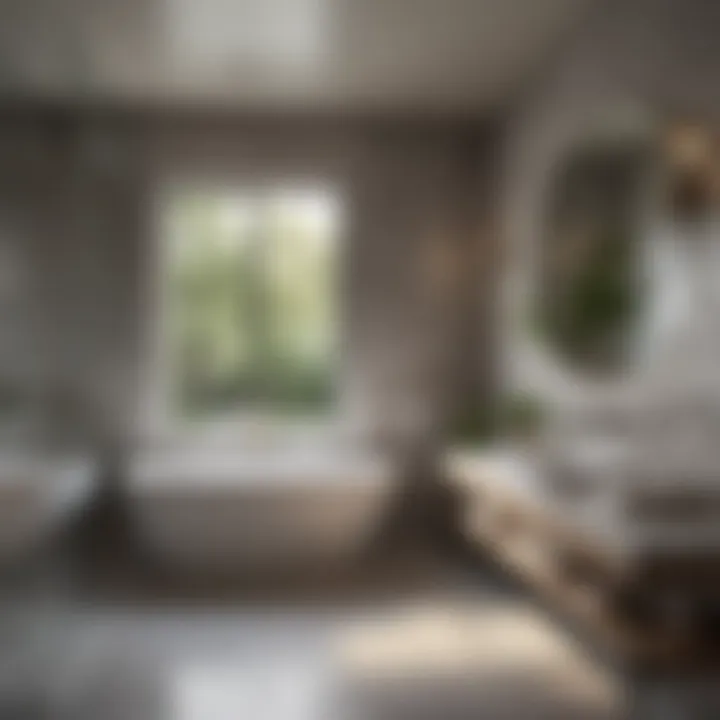
Planning and Renovating Walk-In Bathrooms
Planning and renovating a walk-in bathroom is essential for maximizing both functionality and comfort. Unlike traditional bathrooms, walk-in bathrooms offer space and accessibility that cater to a broad range of needs. Whether you're looking to downsize, accommodate a family member, or simply want a more efficient use of space, careful planning is key to achieving your vision.
When embarking on this journey, consider how these spaces can be customized to your lifestyle. Walk-in bathrooms can blend aesthetics with utility, serving as personal retreats that combine relaxation with everyday hygiene. As you dive into the details, balancing budgetary constraints with ambitious designs will be crucial.
Budgeting for a Walk-In Bathroom
Budgeting is perhaps one of the most significant factors in any renovation project, and a walk-in bathroom is no exception. It’s easy to get swept away by ideas of luxury showers and elegant tiles, but keeping a close eye on expenditures will ensure that your dream doesn't result in financial strain.
Start by defining your overall budget. Consider breaking it down into categories such as:
- Construction Costs: Includes labor, framing, plumbing, and electrical work.
- Materials: Think about tiles, fixtures, and finishes that fit your style. Investing in durable materials, even if they are more expensive upfront, can save you money in the long run due to lower maintenance needs.
- Design Services: Hiring a designer adds to your expense, but their expertise could save you from costly mistakes down the line.
It’s wise to leave a cushion for unexpected expenses—renovations often uncover surprises that can alter your budget.
Selecting Professionals for Your Project
Choosing the right professionals for your walk-in bathroom renovation is pivotal. This decision can significantly influence the success of the project. A skilled contractor should not only have a track record of successful renovations but be willing to communicate openly throughout the process.
Here’s what to look for when selecting professionals:
- Experience and References: Seek past work examples and ask for referrals from previous clients to gauge the quality of their work.
- Licensing and Insurance: Ensure that your chosen contractors are properly licensed and insured to protect yourself from liabilities.
- Compatibility: It’s crucial to find professionals who understand your vision. A good rapport can make the renovation process smoother and more enjoyable.
Timelines and Project Management
Timelines in a renovation project can fluctuate, but a clear plan can help ensure that everything stays on track. A disorganized project can lead to frustration and could drag on longer than necessary, costing additional time and money.
To efficiently manage your renovation:
- Set Clear Milestones: Outline phases of the project from demolition to the final walkthrough. Each phase should have measurable outcomes.
- Regular Check-ins: Maintaining open lines of communication with your contractors will help address any issues promptly.
- Flexibility and Patience: Renovations often come with delays due to unforeseen circumstances; remaining flexible will help you navigate these bumps in the road.
Ultimately, the key to a successful walk-in bathroom renovation lies in thorough planning and informed decision-making. The blend of budget, professionals, and timeline aligns to transform your ideas into a fitting reality.
Common Mistakes in Walk-In Bathroom Design
When it comes to designing a walk-in bathroom, it's easy to get lost in the aesthetic choices and trendy fixtures, but overlooking certain crucial elements can lead to significant pitfalls. Understanding common mistakes made in walk-in bathroom design is essential for ensuring that the space is not only visually appealing but also functional and sustainable over time. The sections below delve into two predominant mistakes: ignoring functionality and underestimating maintenance.
Ignoring Functionality
It might sound straightforward, but many homeowners get swept away by the allure of high-end finishes and innovative designs, neglecting the functional aspects of a walk-in bathroom. Think about it: if your luxurious rain shower doesn’t have adequate water pressure or if the vanity is too small to hold your essentials, the entire space loses its value. Functionality should be at the forefront of design decisions.
Here are some functional elements that are often overlooked:
- Shower Space: The walk-in shower’s size matters a lot. Builders often forget the clearance needed for shower doors or the space required for movement when adding shelves.
- Storage Solutions: Aesthetic cabinetry can make a space look stunning, but if it doesn’t cater to your storage needs, you'll end up with clutter. Plan storage that allows for easy access to towels, toiletries, and cleaning supplies.
- Lighting: Poor lighting can make even the most beautiful tiles look dull. Thoughtful placement of ambient and task lighting will elevate the space and make it more usable.
- Plumbing Layout: An often-missed detail is the layout of plumbing fixtures. Inefficient plumbing can lead to unsightly pipes and complicated repairs.
Ensuring functionality is woven into the design lays the groundwork for a bathroom that works with your daily routine rather than against it.
Underestimating Maintenance
Imagine stepping out of your beautifully designed walk-in bathroom, only to realize that the chic tiles are nearly impossible to clean, or that the brilliant fixtures require intricate upkeep to maintain their sparkle. Maintenance is a key consideration that shouldn't be sidelined during the design process. Choosing materials that are high-maintenance can lead to frustration down the line.
Here are a few points to keep in mind:
- Choose Easy-to-Clean Surfaces: Opt for non-porous materials for countertops and shower walls. Natural stones can be a beautiful choice, but they may need sealing to resist staining.
- Regular Upkeep of Fixtures: Fixtures like faucets and showerheads often require regular descaling. Ignoring this can lead to build-up and eventual wear.
- Ventilation: Adequate ventilation can prevent mold and mildew, reducing maintenance woes in the future. Attending to this aspect can save you from damp and constantly cleaning tiles.
In the end, underestimating maintenance can turn a dream bathroom into a dreaded chore. Pause and reflect on how much time and effort you’re willing to invest in upkeep before finalizing your choices.
Remember, a walk-in bathroom is an extension of your home and lifestyle, striking a balance between beauty and practical utility.
Ending: The Future of Walk-In Bathrooms
As we look ahead, walk-in bathrooms are poised to shift from mere functional spaces to remarkable havens of relaxation and self-care. The importance of this transformation cannot be overstated. Homeowners today are seeking not just beautiful spaces but environments that serve their lifestyle needs. Therefore, understanding the future trends in walk-in bathrooms becomes crucial for anyone considering upgrades or renovations.
One of the key elements shaping this future is the growing emphasis on sustainability. Eco-friendliness is no longer just a trend but a necessity. Homeowners are gravitating towards materials and products that minimize environmental impact. Furthermore, energy-efficient fixtures, such as low-flow shower heads and LED lighting, have become staples in modern designs.
Smart technology continues to play a significant role as well. With sensors that adjust the lighting according to the time of day or mirrors that display the weather, technology integration is enhancing convenience and personalization in walk-in bathrooms. Homeowners can easily control various aspects of their bathroom with a smartphone or voice commands, making these spaces not only smart but incredibly user-friendly.
Another trend to note is the focus on personalization. Homeowners are looking to create spaces that reflect their unique tastes and preferences. This shift has led to more customizable features in walk-in bathrooms, such as modular storage systems and adaptable layouts that maximize efficiency and style.
"The bathroom is one of the most utilized spaces in a home, yet often overlooked in terms of design. As trends evolve, it's important for homeowners to think about what their bathroom can be—not just where they wash up, but where they unwind."
Moreover, wellness trends are taking center stage, as many individuals view their walk-in bathrooms as sanctuaries. Features such as steam showers and aromatherapy diffusers promote relaxation and stress relief. Future designs will likely incorporate additional wellness elements, encouraging a retreat-like atmosphere.
Finally, aging in place considerations are essential. With an increasingly aging population, walk-in bathrooms are being designed with accessibility at the forefront. This includes features like grab bars, non-slip flooring, and curbless showers that cater to the needs of all age groups and physical abilities.
In summary, the future of walk-in bathrooms holds significant promise. From sustainable materials and smart technology to personalization and wellness features, the evolution of these spaces reflects a broader trend in home design. As more homeowners seek to create retreats within their own walls, walk-in bathrooms will undeniably lead the way.





